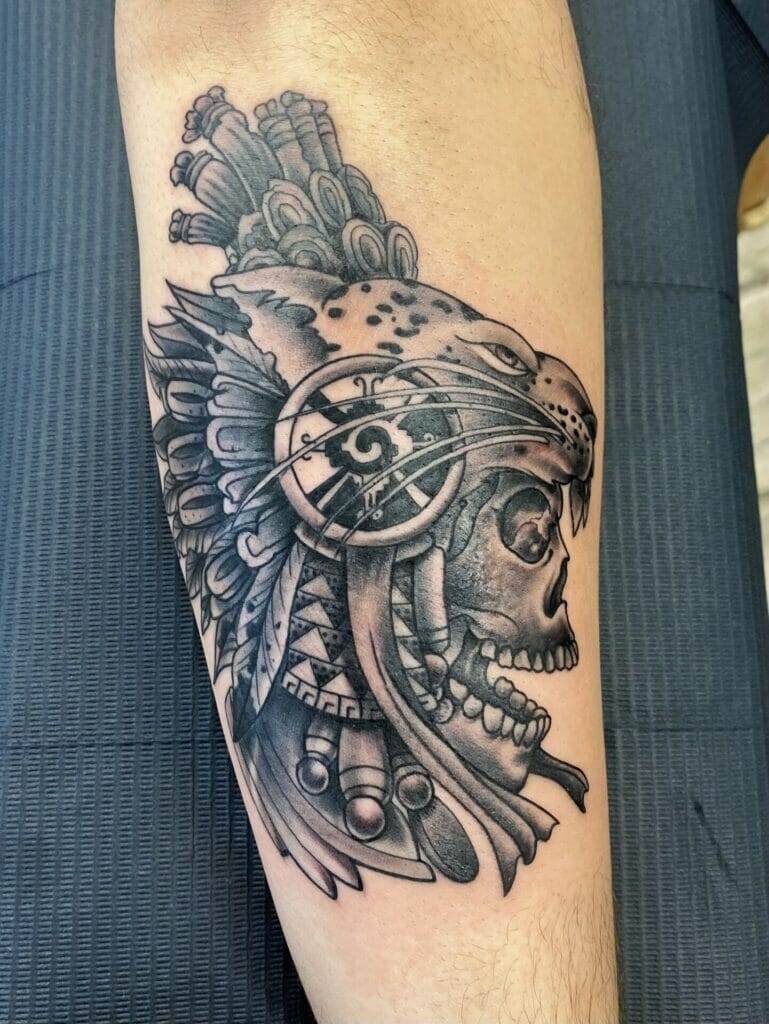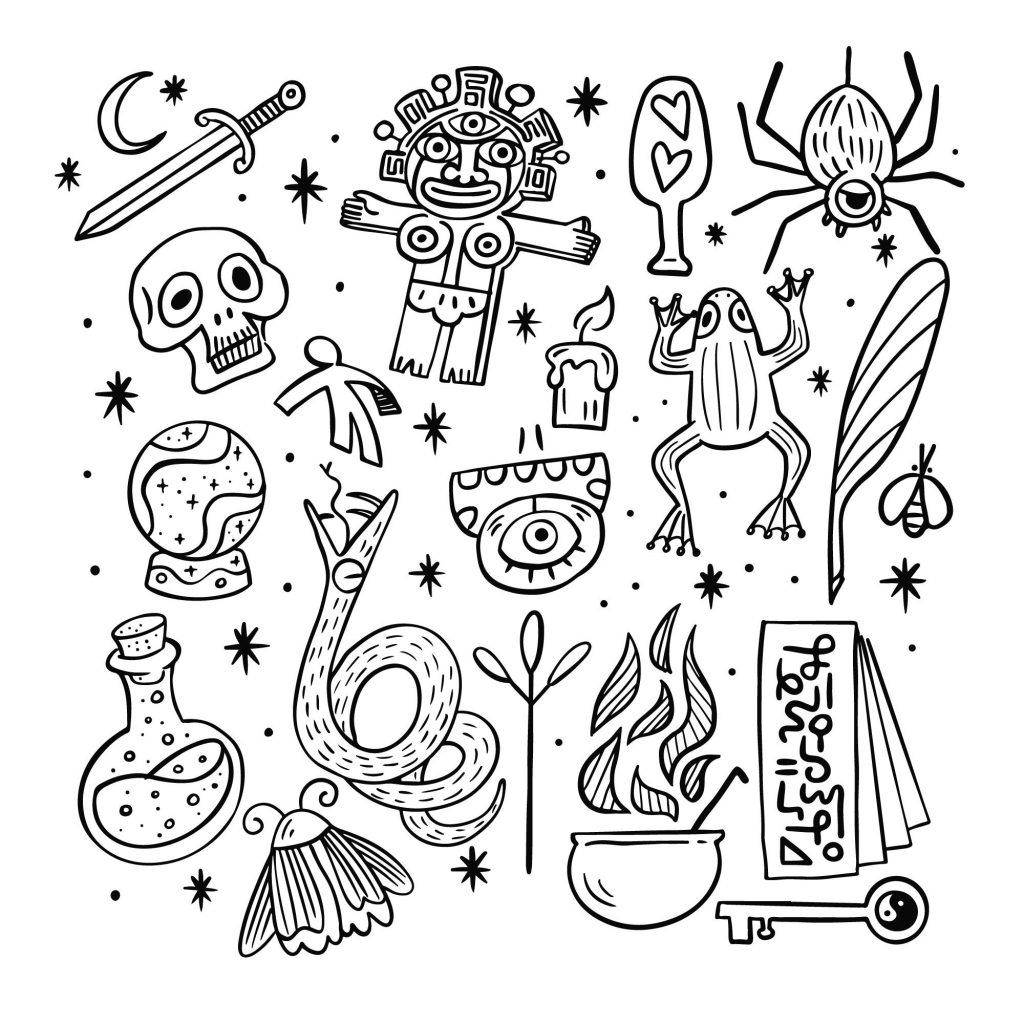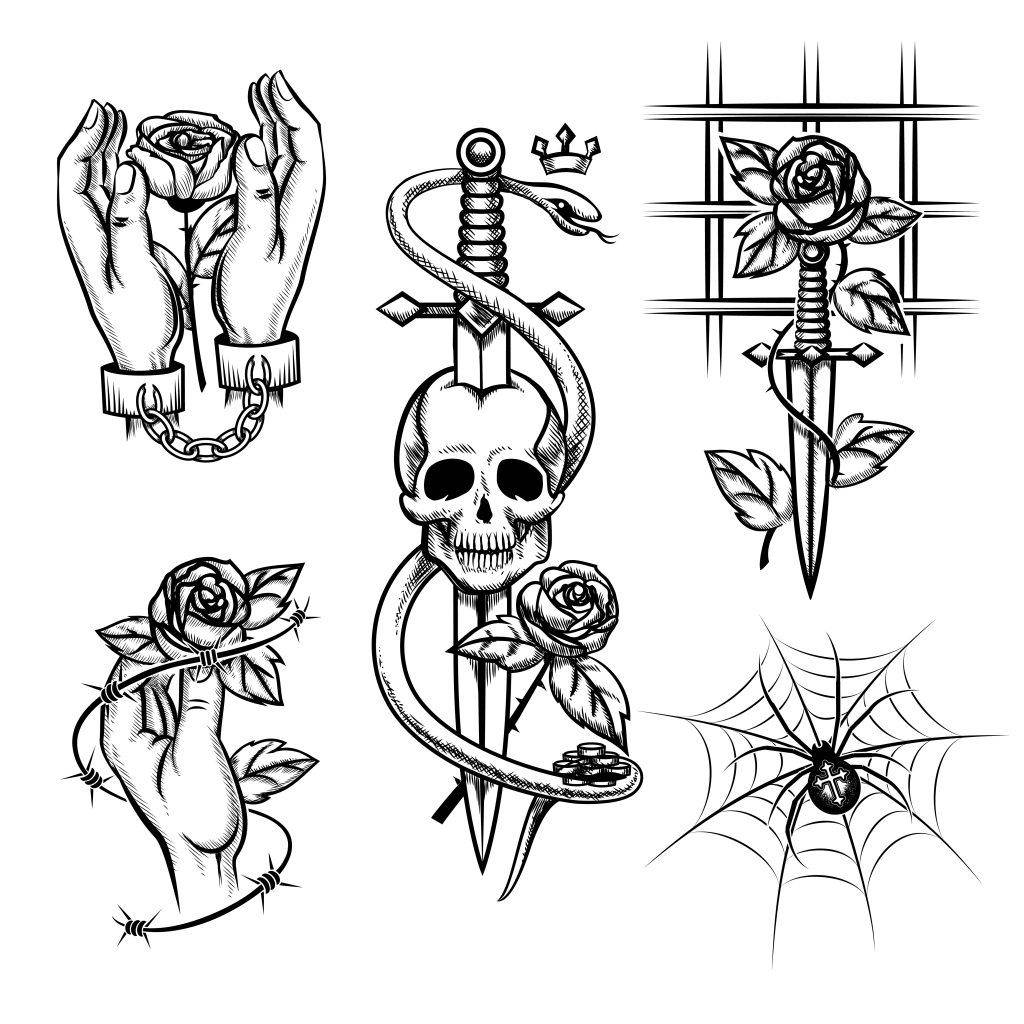Tattooing, a practice that has captivated humanity for millennia, has its roots deeply embedded in the tapestry of human history. This ancient art form has been documented across various civilizations, with evidence of its existence dating back thousands of years. Scholars believe that the earliest forms of tattooing were used for spiritual, religious, or cultural purposes, serving as a means of marking identity, status, or belonging within a community.
The act of permanently adorning the body with intricate designs and symbols has long been a way for individuals to express their connection to their cultural heritage, their beliefs, and their place within the social fabric. From the ancient Egyptians to the Polynesians and the Native American tribes, tattooing has been a powerful tool for conveying important messages and establishing one’s identity. The designs and placement of these tattoos held deep meaning and significance, reflecting the beliefs, traditions, and social structures of the societies in which they were practiced.
As the centuries have passed, the art of tattooing has evolved, adapting to the changing needs and preferences of different cultures. However, the underlying significance of this practice has remained a constant, with individuals across the globe continuing to use tattooing as a means of self-expression, commemoration, and connection to their roots. The enduring appeal of this timeless art form speaks to its ability to transcend the boundaries of time and space, serving as a testament to the human desire to leave a lasting mark on the world.
Key Takeaways
- Tattooing has a rich and ancient history, with origins that can be traced back to various cultures around the world.
- Across different civilizations, tattoos have held symbolic significance and have been used for spiritual and ritualistic purposes.
- The techniques of tattooing have evolved from primitive methods to modern masterpieces, reflecting advancements in technology and artistic skill.
- Tattooing serves as a form of self-expression and identity for individuals, allowing them to showcase their personal stories and beliefs.
- While societal perceptions and stigmas surrounding tattooing have shifted over time, the practice continues to influence art, fashion, and popular culture.
Tattooing in Ancient Civilizations: Uncovering the Symbolic Significance
Throughout the annals of history, tattooing has played a pivotal role in the cultural and social fabric of ancient civilizations. From the enigmatic markings of the Egyptians to the intricate designs of the Polynesians and the symbolic tattoos of Native American tribes, this art form has been a powerful means of conveying important messages and establishing one’s place within the community.
The Egyptians, renowned for their rich cultural heritage and advanced civilization, were among the earliest known practitioners of tattooing. Archaeologists have uncovered evidence of tattoos adorning the bodies of both men and women, with the designs often reflecting their social status, religious beliefs, or connection to the divine. For the Egyptians, tattooing was not merely a decorative practice but a deeply symbolic one, with the placement and imagery of the tattoos holding profound meaning within their belief system.
Similarly, the Polynesians, known for their seafaring prowess and vibrant cultural traditions, have long incorporated tattooing into their way of life. The intricate patterns and designs found on the bodies of Polynesian people were not merely aesthetic choices but rather a reflection of their social hierarchy, spiritual beliefs, and connection to their ancestral heritage. The act of receiving a tattoo was often a rite of passage, signifying an individual’s transition into adulthood or their attainment of a particular social or spiritual status within the community.
The Native American tribes, too, have a rich history of tattooing, with each tribe developing its own unique styles and symbolic meanings. From the intricate geometric designs of the Navajo to the powerful animal imagery of the Haida, these tattoos were a means of expressing one’s identity, spiritual beliefs, and connection to the natural world. The process of receiving a tattoo was often accompanied by rituals and ceremonies, further emphasizing the sacred nature of this practice within these ancient cultures.
Across these diverse ancient civilizations, the symbolic significance of tattooing cannot be overstated. The designs, placement, and rituals associated with this art form were deeply rooted in the belief systems, traditions, and social structures of these societies, serving as a powerful means of communication, identity, and connection to the divine.

The Spiritual and Ritualistic Aspects of Tattooing Across Cultures
Tattooing, as an art form, has long been imbued with profound spiritual and ritualistic significance across various cultures around the world. From the ancient Egyptians to the indigenous tribes of the Pacific, the act of permanently marking the body has been seen as a sacred practice, a rite of passage, or a means of connecting with the divine.
In many cultures, the process of receiving a tattoo was not merely a decorative endeavor but a deeply meaningful ritual, often accompanied by ceremonies, prayers, and the invocation of spiritual forces. The designs and symbols used in these tattoos were carefully chosen to reflect the beliefs, traditions, and worldviews of the individuals and communities involved. For example, the intricate patterns and imagery found on the bodies of Polynesian people were not only aesthetically pleasing but also served as a means of connecting with their ancestral spirits and the natural world.
Similarly, the Native American tribes of North America have a rich history of tattooing, with each tribe developing its own unique styles and symbolic meanings. The act of receiving a tattoo was often seen as a rite of passage, marking an individual’s transition into a new stage of life or their attainment of a particular social or spiritual status within the community. The designs used in these tattoos, such as the powerful animal imagery of the Haida or the intricate geometric patterns of the Navajo, were deeply rooted in the belief systems and cosmologies of these ancient cultures.
Even in more contemporary settings, the spiritual and ritualistic aspects of tattooing have persisted. Many individuals today seek out tattoos as a means of honoring their cultural heritage, commemorating significant life events, or connecting with a higher power or spiritual force. The act of choosing a design, selecting a skilled tattoo artist, and enduring the physical process of having the tattoo applied can be imbued with a sense of ritual and personal significance, serving as a transformative experience for the individual.
Across the vast tapestry of human civilization, the spiritual and ritualistic dimensions of tattooing have been a constant, reflecting the deep-seated human need to express our connection to the divine, our sense of identity, and our place within the larger cosmic order. Whether through the intricate designs of ancient civilizations or the personal narratives of modern-day individuals, the art of tattooing continues to serve as a powerful medium for the exploration and expression of our most profound beliefs and experiences.
The Evolution of Tattooing Techniques: From Primitive to Modern Masterpieces
The art of tattooing has undergone a remarkable transformation over the centuries, evolving from the use of primitive tools and methods to the sophisticated, high-tech equipment and artistry of modern-day tattoo artists. This evolution has not only expanded the creative possibilities of the medium but has also profoundly influenced the way we perceive and experience this timeless form of self-expression.
In the earliest known forms of tattooing, practitioners relied on rudimentary tools and techniques to permanently mark the skin. This could involve the use of sharpened bones, thorns, or even the teeth of animals to puncture the skin and deposit pigments. The designs were often simple, with a focus on geometric patterns or symbolic imagery that held deep cultural significance. Despite the primitive nature of these early techniques, the tattoos produced were imbued with a raw, primal power that spoke to the innate human desire to leave a lasting mark on the world.
As the centuries passed, the art of tattooing continued to evolve, with the exchange of knowledge and techniques across cultures leading to increasingly sophisticated methods and designs. The introduction of modern tattooing equipment, such as the electric tattoo machine, revolutionized the industry, allowing for greater precision, detail, and the creation of intricate, visually stunning designs. Tattoo artists, drawing inspiration from a wide range of artistic traditions, began to push the boundaries of the medium, experimenting with new styles, techniques, and subject matter.
Today, the world of tattooing is a vibrant, ever-evolving landscape, where the fusion of traditional and contemporary approaches has given rise to a dazzling array of artistic expressions. Tattoo artists, armed with state-of-the-art equipment and a deep understanding of the human form, are able to create masterpieces that rival the finest works of art. From the photorealistic portraits that capture the essence of a loved one to the intricate, otherworldly designs that transport the viewer to realms of fantasy and imagination, the modern tattoo has become a true testament to the power of human creativity and craftsmanship.
The evolution of tattooing techniques has not only transformed the aesthetic possibilities of the medium but has also profoundly impacted the way we perceive and experience this art form. The increased accessibility of tattoos, coupled with the growing acceptance and celebration of self-expression through body art, has led to a cultural shift in which tattooing is no longer seen as a fringe or marginalized practice but rather as a vibrant, mainstream form of artistic expression.
Tattooing as a Form of Self-Expression and Identity
| Time Period | Region | Significance |
|---|---|---|
| Ancient Times | Egypt, Greece, Rome | Symbol of status, religious significance |
| Medieval Era | Europe, Japan | Used for identification, punishment |
| Modern Times | North America, Polynesia | Artistic expression, cultural preservation |
In the ever-evolving landscape of human expression, tattooing has emerged as a powerful medium for individuals to assert their unique sense of self and identity. Far beyond mere decoration, the art of permanently marking the body has become a canvas upon which people can tell their stories, commemorate significant life events, and honor the people and beliefs that are most important to them.
For many, the decision to get a tattoo is a deeply personal one, rooted in a desire to create a tangible representation of their innermost thoughts, feelings, and experiences. Whether it’s a delicate floral design that pays tribute to a beloved family member or a bold, intricate sleeve that reflects the wearer’s rebellious spirit, tattoos have become a means of self-actualization and self-affirmation. By adorning their bodies with these indelible marks, individuals are able to assert their individuality, challenge societal norms, and forge a stronger connection to their own sense of identity.
Moreover, the act of getting a tattoo can be a transformative experience, one that allows the individual to commemorate a significant life event or milestone. From the celebration of a new chapter in one’s life to the memorialization of a loved one, tattoos have become a way for people to create a lasting physical representation of their most cherished memories and experiences. In this way, the tattoo becomes a deeply personal talisman, a tangible reminder of the journey that has shaped the individual’s life and the values that they hold dear.
Beyond the personal, tattoos have also become a powerful means of expressing one’s cultural heritage, spiritual beliefs, and connection to the natural world. For many individuals, the designs and symbols they choose to adorn their bodies are a reflection of their ancestral roots, their religious or spiritual affiliations, or their reverence for the natural world. By incorporating these elements into their tattoos, people are able to forge a stronger sense of belonging and a deeper understanding of their place within the larger tapestry of human experience.
As the art of tattooing continues to evolve and gain mainstream acceptance, the ways in which individuals use this medium to express their identity and assert their individuality have become increasingly diverse and multifaceted. From the bold, unapologetic statements of the rebellious to the deeply personal, introspective designs of the contemplative, the tattoo has become a canvas upon which the human experience is writ large, a testament to the enduring power of self-expression and the pursuit of identity.
FAQs
What is the history of tattooing?
Tattooing has a rich and diverse history that dates back thousands of years. It has been practiced by various cultures around the world, with evidence of tattooing found in ancient Egypt, China, Japan, and Polynesia, among other places.
What is the cultural significance of tattoos?
Tattoos have held different cultural meanings and significance throughout history. They have been used for spiritual and religious purposes, as symbols of status and identity, for healing and protection, and as a form of artistic expression.
How has tattooing evolved over time?
Tattooing techniques and styles have evolved over time, influenced by advancements in technology, changes in cultural attitudes, and the globalization of tattooing practices. Traditional methods such as hand-tapping and stick-and-poke have given way to modern electric tattoo machines and a wide range of tattoo styles.
What are some traditional tattooing practices from different cultures?
Traditional tattooing practices vary widely across different cultures. For example, Polynesian cultures have a long tradition of intricate geometric and tribal tattoos, while Japanese tattooing has its own distinct style known as irezumi, featuring motifs such as dragons, koi fish, and cherry blossoms.
How has tattooing been perceived in different societies?
The perception of tattooing has varied across different societies and time periods. While tattoos have been revered and celebrated in some cultures, they have also been stigmatized and associated with criminality or deviance in others. Today, attitudes towards tattoos are increasingly diverse and accepting.



